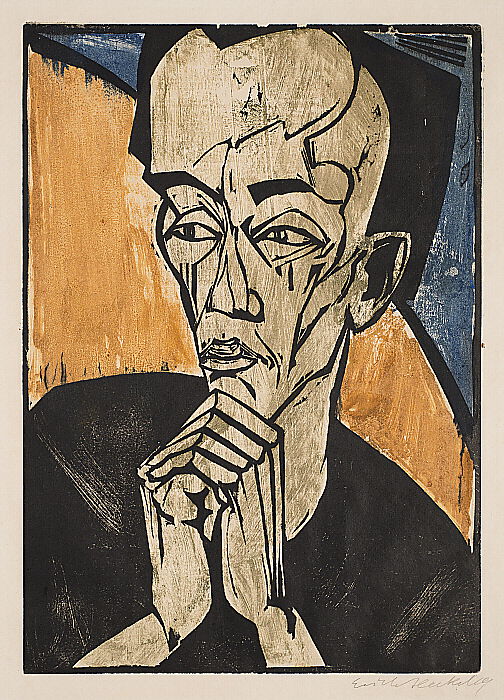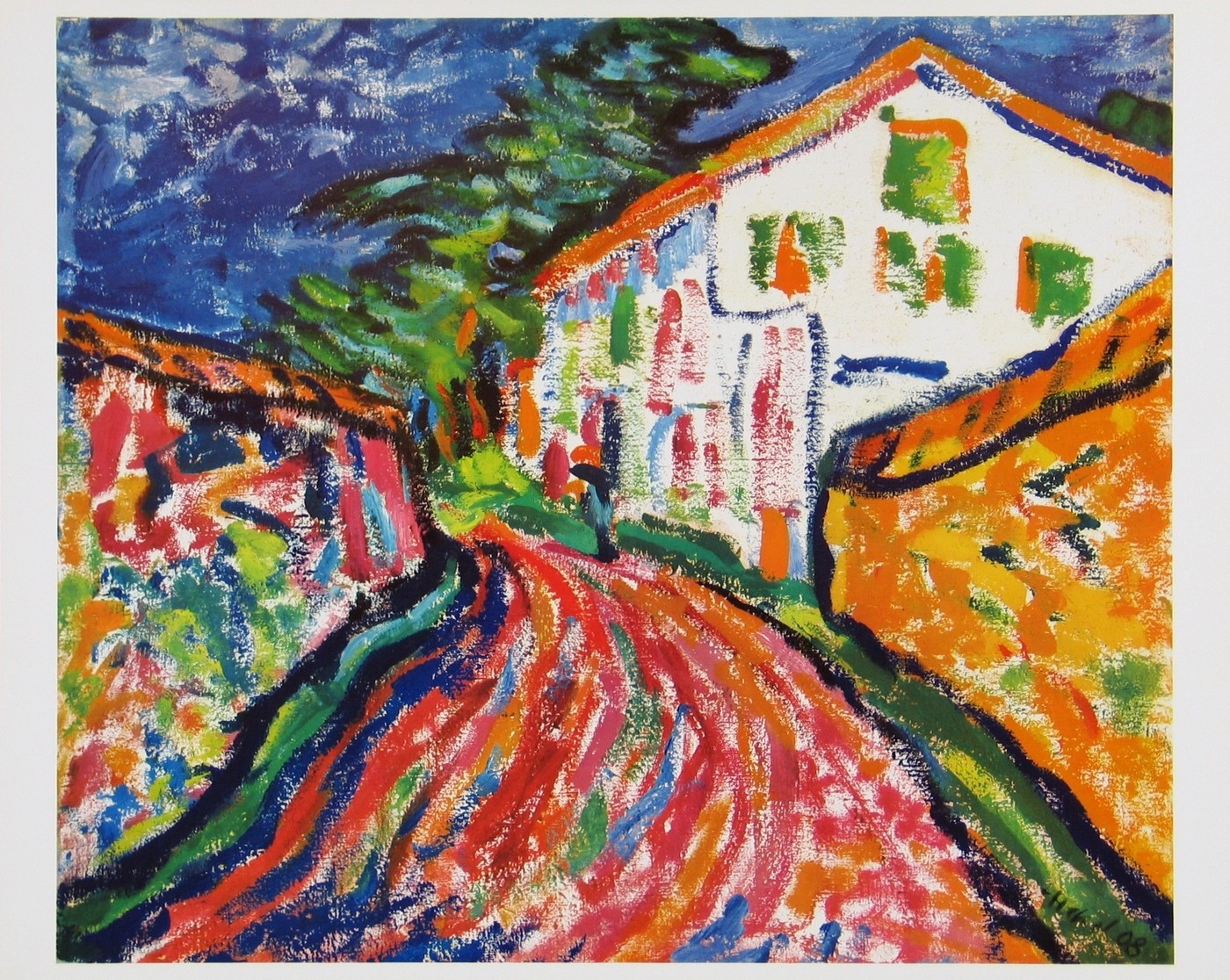
Pin auf Heckel
Erich Heckel (* 31. Juli 1883 in Döbeln; † 27. Januar 1970 in Radolfzell am Bodensee) war ein deutscher Maler und Grafiker des Expressionismus. Erich Heckel war der Sohn eines Eisenbahnbauingenieurs. Zunächst begann er ein Architekturstudium in Dresden. Ursprünglich hegte er eher literarische Neigungen, bildete sich jedoch schließlich als.

Landscape in Schleswig, Erich Heckel, 1930 Art, Landscape art, Painting
Erich Heckel (7.520 Ergebnisse) Neu hinzugefügt. Mehr anzeigen. Finden Sie Kunstwerke und Informationen zu Erich Heckel (deutsch, 1883-1970) auf artnet. Erfahren Sie mehr zu Kunstwerken in Galerien, Auktionslosen, Kunstmessen, Events, Biografiedetails, News und vieles mehr von Erich Heckel.

erich heckel Art Cityscapes Pinterest
Erich Heckel an der Staffelei - Porträt von Ernst Ludwig Kirchner. Erich Heckel (* 31. Juli 1883 in Döbeln; † 27.. Der Stil seiner frühen, pastosen Bilder ist angeregt von Vincent van Gogh und dem französischen Post-Impressionismus. Ab 1908/09 ist ein Übergang zu einer flächigen Malerei mit flüssigen Farben festzustellen.

Portrait of Erich Heckel, Oil on Canvas 10x8", © Copyright 2011 Alan Derwin
Erich Heckel (1883-1970) zählt zu den bedeutendsten Malern und Grafikern des deutschen Expressionismus. Der Autodidakt war Mitbegründer der Brücke in Dresden und deren Organisator. Nachdem er gemeinsam mit Ernst Ludwig Kirchner, Karl Schmidt-Rottluff und Max Pechstein den Expressionismus in Form des „Brücke-Stils" (um 1909/10.

Paintings of Spring Erich Heckel (31 iulie 1883 27 ianuarie 1970), pictor si grafician german
Erich Heckel. Erich Heckel (31 July 1883 in Döbeln - 27 January 1970 in Radolfzell) was a German painter and printmaker, and a founding member of the group Die Brücke ("The Bridge") which existed 1905-1913. Heckel was born in Döbeln, Saxony, the son of a railway engineer. Between 1897 and 1904 he attended the Realgymnasium in Chemnitz.

Erich Heckel (18831970) Küstenlandschaft (Förde gegen Westen), 1913 (83 x 96 cm) в 2020 г
Erich Heckel, (born July 31, 1883, Döbeln, Germany—died January 27, 1970, Radolfzell, West Germany [now Germany]), German painter, printmaker, and sculptor who was one of the founding members of Die Brücke ("The Bridge"), an influential group of German Expressionist artists. He is best known for his paintings and bold woodcuts of nudes.

Erich Heckel Landscape in Holstein, 1913 at Städel Art Museum Frankfurt Germany Museum
Erich Heckel German, 1883-1970. Follow. 1.2k. 1.2k Followers. Painter and printmaker Erich Heckel is considered one of Germany's most important artists; he was instrumental in launching Die Brücke (The Bridge) movement while studying architecture at the University of Dresden in 1905. His early work shifted in.

Erich Heckel Sein Leben Moderne Kunst verstehen!
Erich Heckel was a German artist and founding member of the influential German Expressionist group Die Brücke. His angular woodcuts and paintings, described both the chromatic world and the inner emotions of the artist, as seen in his work Roquairol (1917). Born on July 31, 1883 in Döbeln, Germany and studied architecture in Dresden at the Technische Hochschule where he met other founding.

22 best Erich Heckel images on Pinterest Expressionism, Paintings and Artists
Erich Heckel (31 July 1883 - 27 January 1970) was a German painter and printmaker, and a founding member of the group Die Brücke ("The Bridge") which existed 1905-1913. His work was part of the art competitions at the 1928 Summer Olympics and the 1932 Summer Olympics.

Art Now and Then Erich Heckel
This work is included in the Provenance Research Project, which investigates the ownership history of works in MoMA's collection.. J.B. Neumann, New York; to The Museum of Modern Art, New York, 1955. Provenance research is a work in progress, and is frequently updated with new information.

Erich Heckel, Weisses Haus in Dangast 1908 1908
Erich Heckel. German, 1883-1970. Starr Figura, German Expressionism: The Graphic Impulse, New York, The Museum of Modern Art, 2011. Painter, printmaker. One of four architecture students in Dresden who formed the Brücke group in 1905; served as its business manager. Early paintings and prints focus on nudes in the studio, cabaret themes, and.

Erich Heckel, Deutscher Maler des Expressionismus. Erich Heckel, Pfingsrosen Lot 142 Estimated
Erich Heckel (31 July 1883 - 27 January 1970) was a German painter and printmaker, and a founding member of the group Die Brücke ("The Bridge") which existed 1905-1913. His work was part of the art competitions at the 1928 Summer Olympics and the 1932 Summer Olympics.

ERICK HECKEL German Döbeln, Germany 1883 Radolfzell, Germany 1970 Expressionism
Erich Heckel und sein Kreis: Dokumente - Fotos - Briefe - Schriften, gesammelt und ausgewählt von Karlheinz Gabler, hg. von Stadt Karlsruhe, Städtische Galerie, Stuttgart und Zürich: Belser-Verlag, 1983. Flucht in die Bilder? Die Künstler der Brücke im Nationalsozialismus, Ausst.-Kat, Brücke-Museum, hg. von Aya Soika, Meike.

Erich Heckel (German, 18831970) Sailboats in the harbour, 1911. Oil on canvas, Expressionisme
Erich Heckel was born in Döbeln, in the Central Saxony district of Germany, to railway engineer, Wilhelm Julius. Little is known about his early life but it is recorded that, from the age of about ten, he attended the Realgymnasium school in Chemnitz where he befriended his future collaborator in art, Karl Schmidt-Rottluff. On leaving school.

Paintings of Spring Erich Heckel (31 iulie 1883 27 ianuarie 1970), pictor si grafician german
Döbein, 1883-Radolfzell, 1970. The German painter and engraver Erich Heckel was one of the founders of the Expressionist group Die Brücke (The Bridge) in Dresden and one of its most active members. He received painting and drawing classes in Chemnitz, where he met Karl Schmidt-Rottluff. In 1904 the two of them moved to Dresden to study.

Erich Heckel, Dorfstrasse, 1907 · Galerie Ludorff
Der in Döbeln geborene Erich Heckel ist bereits während seiner Schulzeit in Chemnitz ein vielfach prämierter Zeichner. Er erhält Kunstunterricht bei Robert Hoffmann (1858-1930).. Um seine Bilder vor möglichen Zerstörungen zu schützen, lagert er diese in mehreren Kellern und im Tresorraum der Deutschen Bank ein. Ein Bombentreffer.